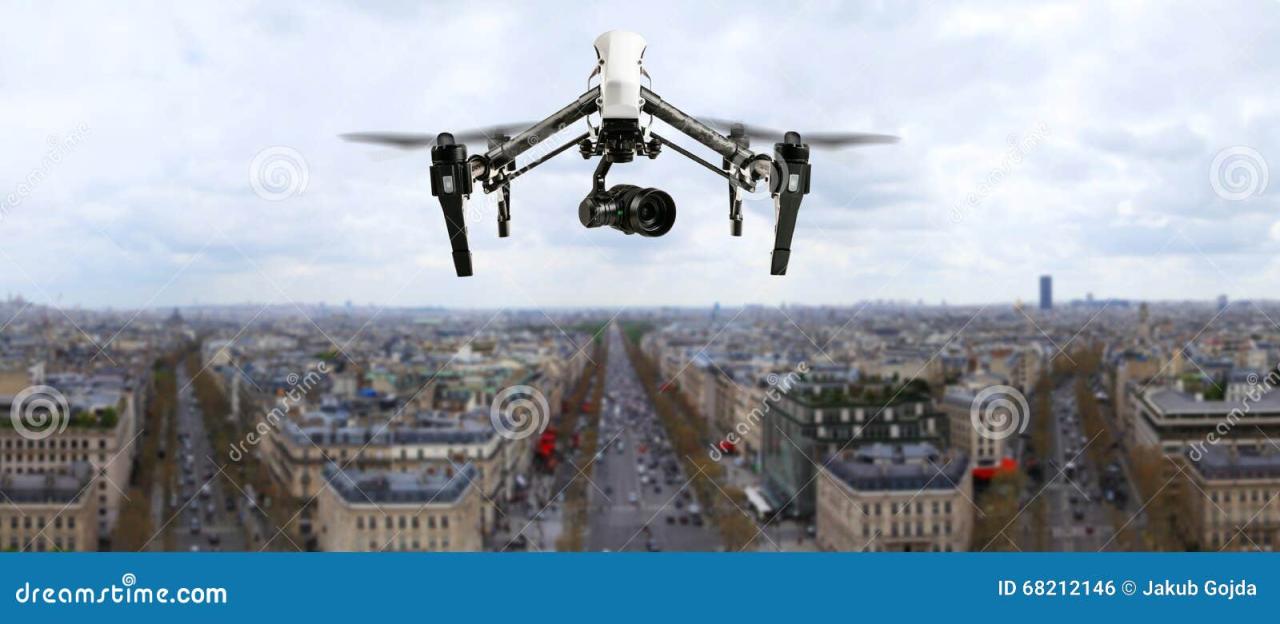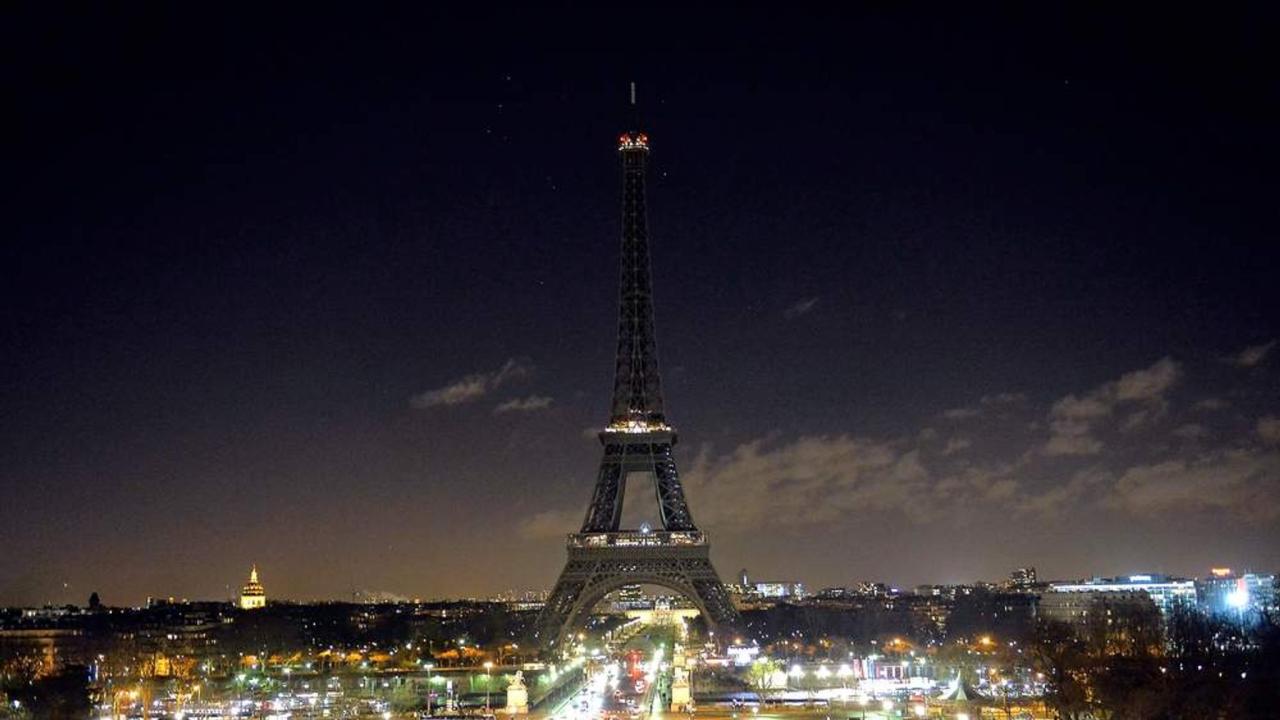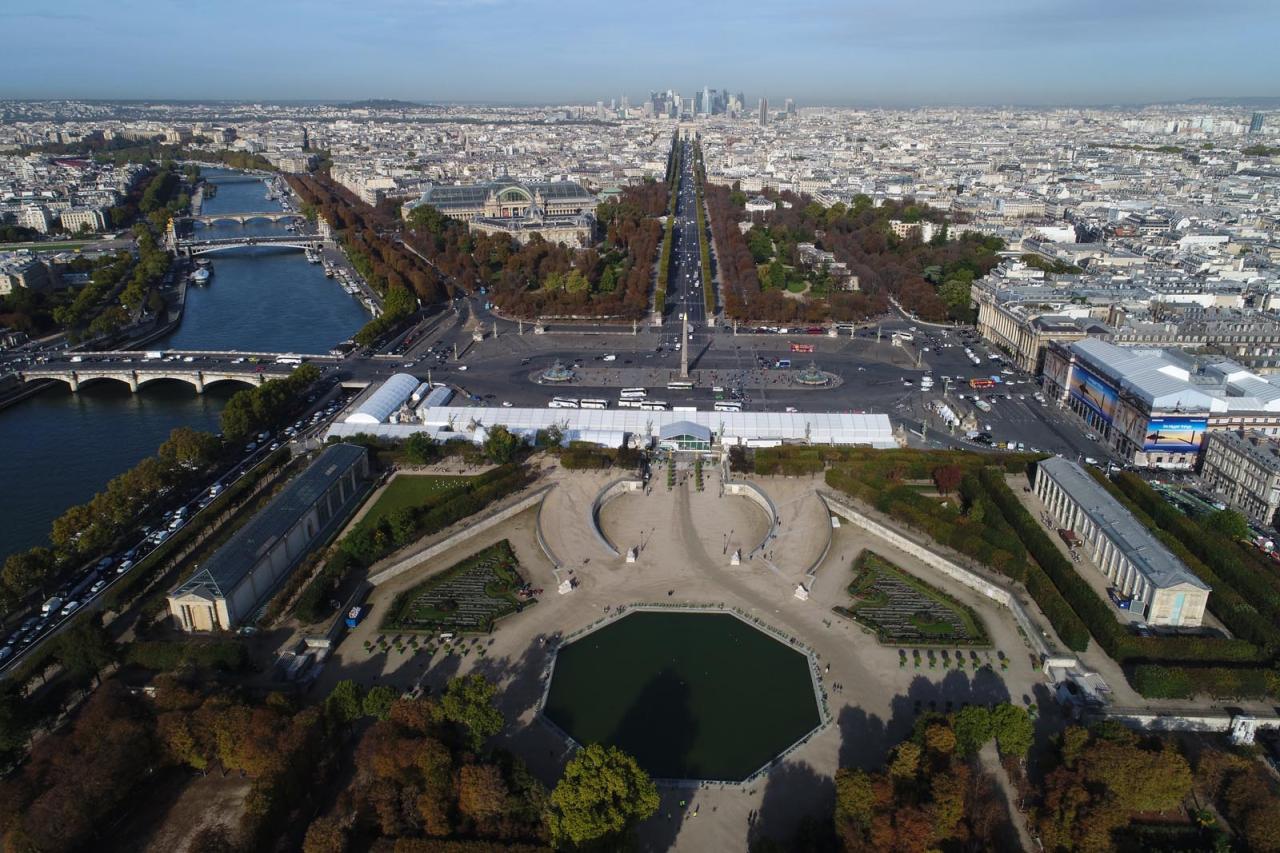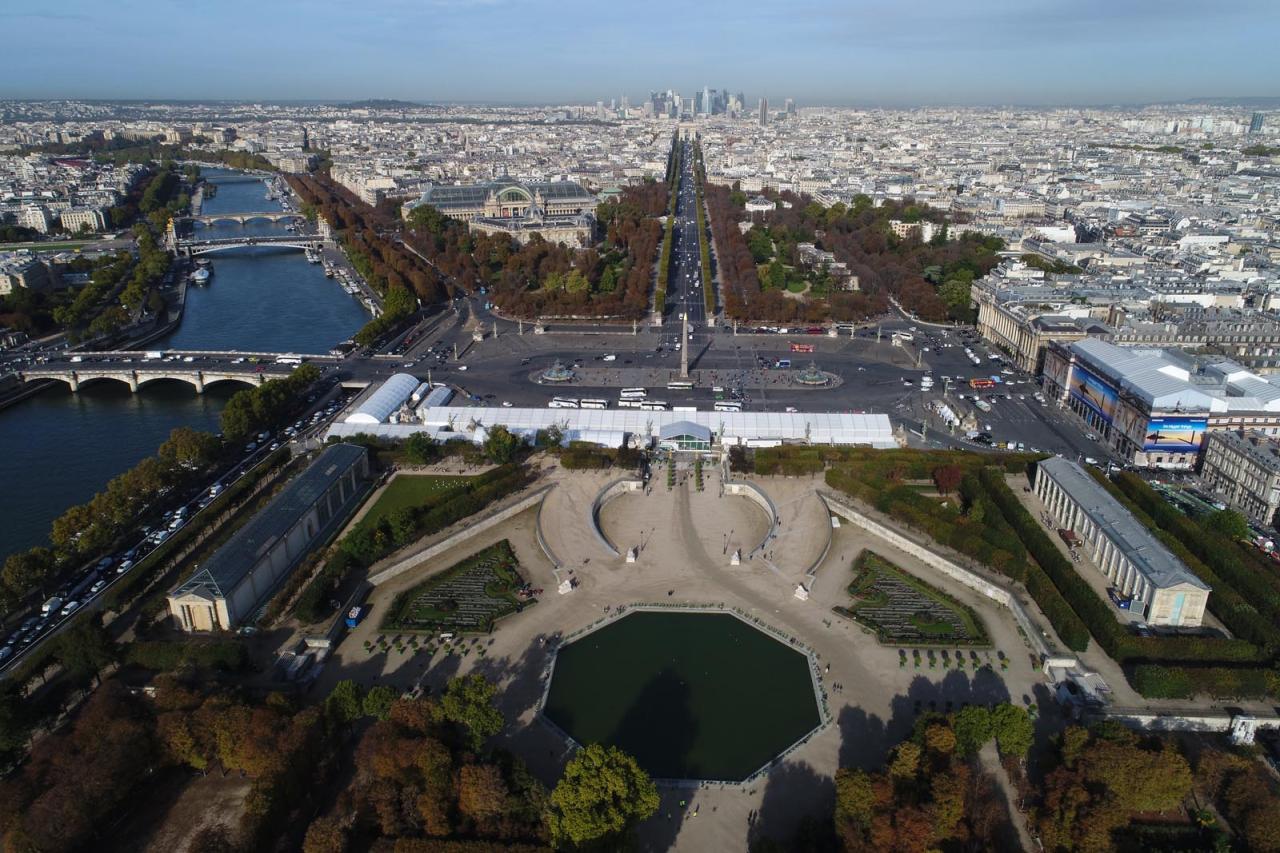Mystery Drone Paris: Imagine the Parisian skyline, suddenly punctuated by unidentified drones. These weren’t your average hobbyist models; these were silent, swift, and strangely coordinated. Their appearances sparked a whirlwind of speculation, ranging from elaborate art installations to clandestine government operations. This exploration delves into the puzzling phenomenon, examining eyewitness accounts, technological possibilities, and the impact on the city.
Reports detail various drone characteristics – size, shape, lighting, and unusual flight patterns – all adding to the mystery. Sightings occurred across Paris, at different times and locations, defying easy explanation. We’ll analyze these reports, explore potential scenarios, and consider the technological capabilities that could explain the drones’ behavior.
The Phenomenon

The appearance of unidentified drones in Paris during late 2023 sparked significant public interest and raised questions about their origin and purpose. These sightings, initially dismissed by some as hoaxes or misidentifications, garnered increasing attention due to their frequency and the persistent inability to identify their operators. The characteristics of the drones, the locations of the sightings, and the overall lack of explanation fueled speculation and even conspiracy theories.
Drone Characteristics
Reports consistently described the drones as relatively small, roughly the size of a large bird. Their shape was variously described as cylindrical or oblong, with some witnesses mentioning a slight curvature. Most accounts highlighted the presence of bright, pulsating lights, often described as white or blue, though some reports included red or green lights. The drones were generally silent, though a few accounts mentioned a faint whirring or buzzing sound at close range.
The lack of a consistent description, however, highlights the difficulty in obtaining definitive information.
Sightings Across Paris
Sightings occurred across various arrondissements of Paris, suggesting a deliberate pattern of movement or a wide-ranging operational area. Reports came from both densely populated areas and more sparsely populated outskirts, indicating that the drones were not limited to specific geographical locations. The frequency of sightings fluctuated, with periods of intense activity followed by apparent lulls. This inconsistent pattern further complicated efforts to understand the drones’ purpose and operational strategy.
Chronological Overview of Sightings
The following table summarizes reported sightings, noting the lack of precise information in some instances. The inconsistencies in reporting emphasize the challenges in creating a complete picture.
| Date | Time | Location | Description of Drone |
|---|---|---|---|
| October 26, 2023 | 22:00 | Near the Eiffel Tower | Small, cylindrical, white pulsating light |
| November 5, 2023 | 01:30 | 17th Arrondissement | Oblong shape, blue and red lights, faint buzzing sound |
| November 12, 2023 | 18:45 | Near the Louvre Museum | Small, cylindrical, single white light |
| November 20, 2023 | 23:00 | Bois de Boulogne | Unclear description, multiple witnesses reported a fast-moving object with lights |
| December 1, 2023 | 00:15 | Near the Seine River | Small, oblong, white light, silent |
Possible Explanations
The mysterious Parisian drone swarms, while initially baffling, lend themselves to several potential explanations, ranging from elaborate artistic performances to sophisticated hoaxes and even, though less likely, covert government operations. Understanding these possibilities requires considering the motivations and capabilities behind such an event.
Artistic Expression and Public Performance
One intriguing hypothesis posits the drone flights as a large-scale, technologically advanced art installation or public performance. Imagine a meticulously choreographed display, with hundreds of drones moving in unison to create fleeting, three-dimensional artwork against the Parisian skyline. The ephemeral nature of the event, its lack of clear messaging, and the sheer spectacle of it could all be considered elements of a performance designed to provoke thought and awe, rather than to convey a specific message.
The artist or collective behind such a project would need considerable resources, including a fleet of drones, sophisticated flight control software, and perhaps even permits or approvals, depending on airspace regulations. Similar, though smaller-scale, drone light shows are already common at events and festivals worldwide, suggesting this explanation isn’t entirely far-fetched. The scale and sophistication of the Paris events, however, would represent a significant leap forward in this type of artistic expression.
Sophisticated Prank or Publicity Stunt
Alternatively, the drone appearances could have been a highly organized and technically demanding prank or publicity stunt. Consider a scenario where a tech-savvy group, perhaps with experience in drone programming and piloting, planned and executed a coordinated flight pattern designed to maximize media attention and generate widespread intrigue. Their motivation could range from pure mischief to promoting a product, service, or even an ideological message.
The challenge for such a stunt would lie in the complexity of coordinating numerous drones simultaneously, avoiding detection, and managing potential risks such as drone malfunctions or collisions. The success of such a prank would depend on meticulous planning, technological expertise, and a degree of luck in avoiding detection by authorities. The scale of the Paris events suggests significant resources and planning were involved, hinting at a well-funded and potentially highly organized group.
Military or Government Involvement versus Civilian Explanations
Comparing military or government involvement with civilian explanations requires careful consideration of capabilities and motivations. While the sophistication of the drone maneuvers is impressive, it doesn’t automatically point towards military technology. Civilian drone technology is rapidly advancing, and dedicated hobbyists or private companies might possess the necessary expertise. The key difference lies in the potential motivations. A military or government operation might involve surveillance, testing new technology, or even a covert message.
Conversely, civilian motivations are likely to center on artistic expression, publicity, or simple mischief. The lack of any apparent damage or disruption, along with the absence of any clear political or military message, weighs against a military or government explanation. The absence of a clear motive is, however, a point that can be applied to civilian explanations as well.
Motivations Behind Intentional Drone Appearances
If the drone appearances were intentional, the motivations could be diverse. Artistic expression and public performance have already been mentioned, offering a spectacle that challenges our perceptions of public space and technological capabilities. A publicity stunt could aim to promote a product, idea, or even a cause, generating viral media attention and potentially influencing public opinion. A more sinister motivation could involve a political message, though the lack of any overtly political symbolism makes this less likely.
Finally, a simple desire for notoriety or mischief could also be a factor, demonstrating technological prowess and the ability to disrupt the normal functioning of a major city. Ultimately, determining the true motivation requires further investigation and analysis, possibly never to be definitively concluded.
Technological Aspects
The mysterious Paris drone sightings raise intriguing questions about the technological capabilities and limitations of the drones involved. Analyzing reported observations allows us to infer likely specifications and assess the feasibility of such operations within a highly monitored urban environment. Understanding these aspects is crucial to evaluating the various explanations proposed for the phenomenon.Drone Specifications and Operational Challenges in Paris
Likely Drone Specifications
Based on accounts describing swift, agile maneuvers and extended flight times, the drones were likely high-end models with advanced features. These likely included sophisticated flight controllers capable of autonomous navigation and obstacle avoidance, possibly utilizing GPS, visual sensors, and possibly even radar or lidar for precise positioning and mapping, even in challenging urban environments. The reported extended flight times suggest substantial battery capacity, potentially through the use of multiple batteries or advanced battery technology.
The ability to perform complex maneuvers indicates powerful motors and a lightweight, yet durable airframe. Payload capacity is difficult to estimate definitively, but given the lack of reports of dropped objects or visual payloads, it was likely small, perhaps carrying only sensors or communication equipment.
Flight Range, Battery Life, and Payload Capacity
Commercial drones with similar capabilities, such as those used for professional cinematography or surveying, typically have a flight range of 20-40 kilometers and a battery life of 20-40 minutes per battery. To achieve the extended flight times reported, multiple battery packs or alternative power sources would have been needed. Payload capacity would depend on the specific drone model but is generally in the range of several kilograms for larger professional drones, though likely much less for this scenario given the apparent stealth nature of the operations.
A smaller, lighter drone could achieve greater range and flight time while carrying only essential sensors and communication equipment. For example, a DJI Matrice 300 RTK, a popular professional drone, boasts a 55-minute flight time, but a smaller drone, modified for longer endurance, might have been used.
Challenges of Secret Drone Operation in Paris
Operating drones secretly in a city like Paris, densely populated and heavily surveilled, presents significant challenges. The city’s extensive CCTV network, coupled with air traffic control restrictions and potential counter-drone measures, would make covert operations difficult. To avoid detection, the drones would have needed advanced stealth capabilities, including low-noise motors, specialized coatings to reduce radar signatures, and potentially the use of radio frequencies that are less likely to be intercepted or detected by counter-drone systems.
Navigation in the crowded airspace of Paris would require sophisticated obstacle avoidance systems and precise flight planning to avoid collisions with other aircraft and buildings. The risk of detection and potential legal repercussions would be considerable.
Examples of Relevant Drone Technology
Several technologies could explain the observed maneuvers and capabilities. Advanced GPS systems, coupled with sophisticated flight controllers and obstacle avoidance algorithms, would be essential for autonomous navigation in complex environments. The use of visual sensors, such as high-resolution cameras and computer vision algorithms, would allow for real-time mapping and obstacle avoidance. Furthermore, some drones incorporate advanced communication systems, enabling long-range data transmission and control even in urban areas with signal interference.
That whole mystery drone situation in Paris is pretty wild, right? It makes you wonder about the frequency of these things. To get a better idea of drone incidents in the city, check out this article on drone crashes in Paris , which might shed some light on the overall problem. Hopefully, understanding the bigger picture helps solve the mystery of that one specific drone.
The ability to operate silently and evade detection would likely require customized designs with low-noise propellers and specialized materials to minimize radar signatures. The development of drones with extended flight times through improved battery technology and energy management systems is also ongoing and could explain the observed endurance.
Social and Media Impact

The Paris drone mystery captivated global audiences, sparking a whirlwind of public reaction and unprecedented media coverage. The unusual nature of the sightings, coupled with the lack of immediate explanation, created a fertile ground for speculation and intense public engagement across various platforms. Social media played a pivotal role in disseminating information, shaping public perception, and influencing the narrative surrounding the event.The public reaction was a complex mix of fascination, fear, and amusement.
Initial reports generated a wave of curiosity and speculation, with many Parisians taking to social media to share videos and photos of the mysterious drones. News outlets quickly picked up the story, amplifying the mystery and further fueling public interest. However, as the sightings continued and explanations remained elusive, some anxieties emerged regarding potential security threats or even a possible act of sabotage.
Conversely, the unusual nature of the event also led to a surge of humorous memes and online discussions, highlighting the absurdity of the situation.
Public Reaction and Social Media’s Role
Social media platforms like Twitter, Facebook, and Instagram became central hubs for sharing information and speculation about the drone sightings. Users posted videos and images, debated possible explanations, and created hashtags such as #ParisDrones and #MystèreParisien, which quickly trended globally. This rapid dissemination of information, often before official statements were released, significantly influenced public perception and contributed to the widespread nature of the mystery.
That whole mystery drone thing in Paris has everyone buzzing, right? It got me thinking about drone safety in general, and I found this article about a drone crash in Paris that might be related, or maybe it’s just a coincidence. Either way, it highlights the potential dangers of unregulated drone use, which makes the mystery drone situation even more intriguing.
For example, a widely circulated video showing a drone seemingly performing acrobatic maneuvers went viral, sparking numerous theories ranging from elaborate pranks to government experiments. Conversely, other social media posts highlighted the concerns of local residents about potential security risks or disruptions to daily life. The sheer volume of user-generated content amplified the story’s reach and impact, transforming the event into a significant social media phenomenon.
Media Coverage Timeline
The media coverage of the Paris drone mystery followed a distinct timeline. Initial reports, appearing within hours of the first sightings, focused on the unusual nature of the event and the lack of explanation from authorities. News outlets across the globe quickly picked up the story, leading to a surge in online searches and social media discussions. As days passed and no official explanation emerged, the narrative shifted, with speculation ranging from elaborate hoaxes to potential security breaches.
Major news organizations deployed reporters to Paris, further amplifying the story and generating a continuous flow of updates. The lack of definitive answers sustained the public’s interest for weeks, with news coverage often incorporating social media content and user-generated theories. As investigations continued, the media’s focus gradually shifted from the mystery itself to the ongoing investigations and the potential implications of the event.
Impact on Tourism, Businesses, and Public Safety
While the overall impact on tourism, businesses, and public safety was relatively minor, the drone sightings did create some localized disruptions. Some tourists expressed concerns about safety, potentially impacting tourism numbers in the short term. Businesses located near the drone sightings may have experienced temporary disruptions, particularly if the events interfered with operations or public access. Furthermore, the deployment of police resources to investigate the drones diverted attention and resources from other potential public safety concerns.
However, the incident ultimately did not lead to any significant long-term negative impacts on Paris’s economy or public safety, with the mystery itself becoming a somewhat unusual addition to the city’s lore.
Investigative Approaches
Uncovering the source of the mysterious Parisian drones requires a multi-faceted investigative approach, combining technological expertise with traditional investigative techniques. A successful investigation would need to prioritize the collection and analysis of diverse data points, leading to the identification of the drones’ origin, their operators, and their ultimate purpose. This would necessitate a coordinated effort involving various agencies and experts.
A hypothetical investigation would leverage several key strategies to trace the drones’ origins and identify those responsible. This includes a comprehensive analysis of the drones themselves, a detailed examination of flight patterns and data, and a thorough investigation of potential suspects and motives. The investigation would need to consider both technological and human aspects, recognizing that the drones are merely instruments used by individuals or groups with specific aims.
Drone Physical Examination and Analysis
A detailed forensic examination of any recovered drone wreckage is crucial. This would involve analyzing the drone’s components to determine its manufacturer, identifying any unique serial numbers or markings, and examining the software and firmware for clues about its origin and programming. Experts in reverse engineering and electronics would be essential to this process. For example, analyzing the materials used in construction could point to a specific manufacturer or supplier, and examining the internal circuitry could reveal custom modifications or unique identifiers.
The analysis of any remaining data storage on the drone’s onboard systems could be critical in pinpointing its operator(s).
Tracking Drone Flight Paths and Data
Analyzing flight data is paramount. This involves reviewing any available surveillance footage, radar data, and eyewitness accounts to reconstruct the drones’ flight paths. This data could reveal patterns, potential launch points, and even potential landing sites. The use of sophisticated mapping software and flight simulation programs could help reconstruct the drones’ trajectories and identify areas of interest for further investigation.
Similar to investigations into other unidentified aerial phenomena, the accuracy of the data and its correlation with other evidence is crucial to the investigation’s success. For instance, triangulation of multiple witness accounts could narrow down the possible launch locations.
Identifying Potential Leads and Avenues of Inquiry, Mystery drone paris
Investigators would need to pursue several avenues of inquiry. This includes interviewing potential witnesses, examining social media for relevant information, and collaborating with telecommunications companies to trace any signals associated with the drones’ operation. Further, exploring potential links to known drone enthusiasts, hobbyists, or groups with a demonstrated interest in aerial technology would be critical. Investigating any similar drone incidents reported elsewhere could uncover potential links or patterns, and exploring potential motives ranging from artistic expression to political activism or even more nefarious intentions should be considered.
The investigation would also need to consider the possibility of foreign involvement or state-sponsored activity.
Hypothetical Investigation Flowchart
The following flowchart Artikels the key steps in a hypothetical investigation:
- Secure and analyze recovered drone wreckage: Forensic examination of components, software, and firmware.
- Gather and analyze flight data: Review surveillance footage, radar data, and eyewitness accounts.
- Identify potential launch and landing sites: Use flight path reconstruction and mapping software.
- Interview potential witnesses: Collect firsthand accounts of drone sightings.
- Investigate social media and online forums: Search for relevant information and potential suspects.
- Collaborate with telecommunications companies: Trace any signals associated with drone operation.
- Identify and interview potential suspects: Focus on individuals with relevant expertise or motives.
- Explore potential links to similar incidents: Uncover patterns and connections.
- Analyze potential motives: Consider various possibilities, including artistic expression, political activism, or criminal activity.
- Prepare a comprehensive report: Document findings and conclusions.
Illustrative Scenarios

Visualizing the events surrounding the mysterious Paris drone swarm requires considering various perspectives and potential scenarios. These depictions aim to provide a clearer understanding of what might have transpired, based on the information available. While these are hypothetical, they draw upon common drone capabilities and operational strategies.
Drone Flight Patterns Over the Eiffel Tower
Imagine a late evening scene. The Eiffel Tower stands majestically against a darkening Parisian sky, its lights twinkling. Suddenly, multiple small drones, perhaps a dozen or more, appear, their lights flashing in a coordinated pattern. They don’t simply fly in a straight line; instead, they weave intricate patterns around the tower, sometimes forming fleeting shapes – a fleeting arrow, then a circle, then a wave.
The movements are too precise and too synchronized to be accidental. The drones maintain a consistent distance from the tower and each other, suggesting sophisticated programming or a skilled operator with multiple drone control systems. The overall effect is both mesmerizing and unsettling, a silent, technologically advanced ballet played out against the iconic backdrop of Paris. The drones’ movements are erratic enough to appear unpredictable, yet structured enough to suggest a predetermined choreography.
Possible Drone Launch or Control Site
A potential launch or control site could be located on a rooftop overlooking a wide area, such as a building near the Seine River with unobstructed views. Imagine a dimly lit room, perhaps a converted apartment or office space. Several laptops are open, displaying complex software interfaces, likely drone control programs with real-time feeds from multiple cameras. Scattered around are numerous drone bodies, spare batteries, and charging stations.
The operator, or operators, are hunched over the screens, their faces illuminated by the glow of the monitors. The room is cluttered but organized, reflecting the intensity and precision required to manage a swarm of drones. The presence of sophisticated radio equipment or directional antennas might indicate a longer-range control system. The scene conveys a sense of clandestine activity, a hidden operation conducted with a high level of technical skill and secrecy.
Hypothetical Confrontation Between Authorities and Drone Operators
The scene shifts to a rooftop chase. Police officers, armed with nets and jamming devices, pursue the fleeing drone operators. The operators, agile and quick-witted, are trying to escape with their equipment, perhaps scrambling to disable their drones remotely before capture. The chase is tense, a mixture of stealth and sudden bursts of action. One operator might be apprehended, while another successfully manages to escape with some drones, leaving behind a trail of abandoned equipment.
The visual imagery would depict the struggle, the mix of police uniforms and the frantic movements of the fleeing suspects. The contrasting visuals of the technological tools against the backdrop of a traditional police pursuit highlight the novelty and complexity of the situation.
Ever wonder about those unexplained drone sightings over Paris? It’s a pretty weird situation, right? Well, you can learn more about this whole “mystery drone Paris” enigma by checking out this article: mystery drone paris. It dives into the theories and the official responses, which are equally puzzling. So if you’re into unsolved aerial mysteries, this is your jam.
The mystery drone Paris situation is definitely a head-scratcher.
Witness Interaction with a Drone
A lone tourist, perhaps taking a nighttime stroll along the Seine, looks up and sees a drone hovering silently nearby. It’s close enough to see details – the sleek design, the subtle whirring of its rotors. The drone momentarily stops its erratic flight pattern and seems to hover, almost inquisitively, before resuming its programmed course. The tourist’s reaction is one of astonishment and perhaps a touch of fear.
The scene captures the unexpected encounter between human observer and autonomous technology, a moment of silent communication between two very different entities in the heart of a bustling city. The drone’s close proximity and seemingly deliberate pause before continuing its flight path create a sense of intrigue and mystery.
Conclusive Thoughts: Mystery Drone Paris

The mystery of the Paris drones remains unsolved, a captivating blend of technological prowess and public intrigue. While we’ve explored various explanations – from artistic performances to covert operations – the lack of definitive answers only intensifies the enigma. The incident highlights the potential for unexpected disruptions in even the most heavily surveilled environments and underscores the power of collective curiosity in unraveling modern-day mysteries.
The unanswered questions, however, linger, prompting further investigation and reminding us of the unknown that still exists within our technological landscape.
FAQ Corner
What types of drones could have been involved?
Based on reported flight capabilities, high-end, long-range drones with advanced flight control systems are likely suspects. Models capable of autonomous flight and potentially equipped with sophisticated counter-surveillance measures would fit the descriptions.
Were there any injuries or damage reported?
While the drones’ presence caused alarm, there are no widely reported instances of injuries or property damage directly attributed to the drones themselves.
How did the drones avoid detection for so long?
This is a key question. The drones’ ability to evade detection in a city like Paris suggests sophisticated technology, potentially involving advanced stealth capabilities, carefully planned flight paths, and potentially even jamming or spoofing of surveillance systems.
